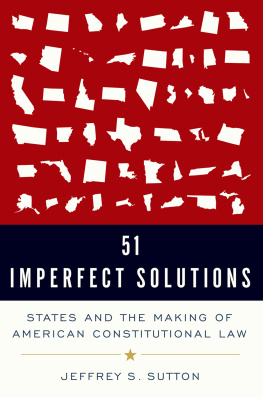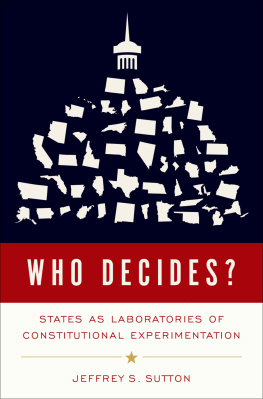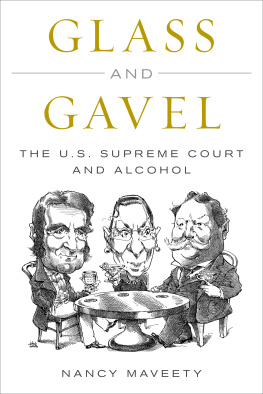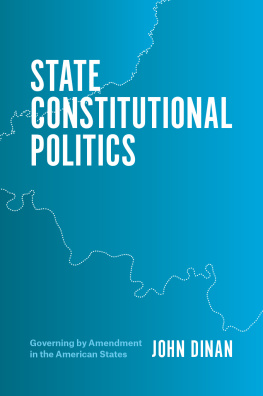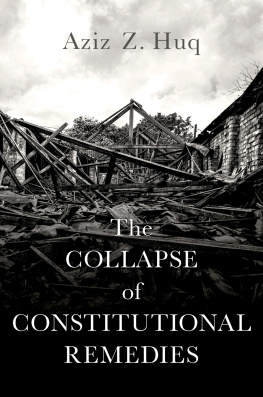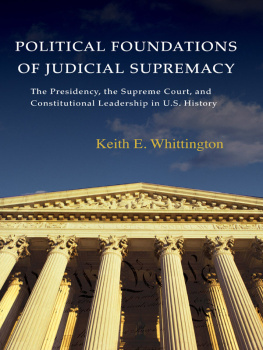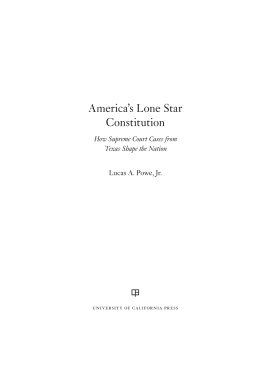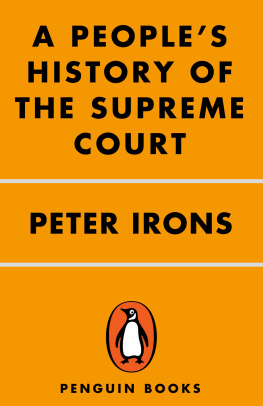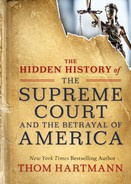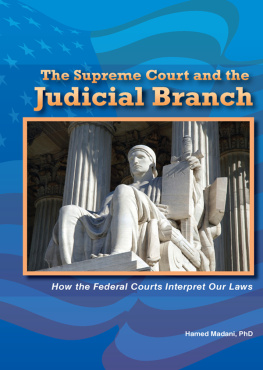51 IMPERFECT SOLUTIONS


Oxford University Press is a department of the University of Oxford. It furthers the Universitys objective of excellence in research, scholarship, and education by publishing worldwide. Oxford is a registered trade mark of Oxford University Press in the UK and certain other countries.
Published in the United States of America by Oxford University Press
198 Madison Avenue, New York, NY 10016, United States of America.
Oxford University Press 2018
All rights reserved. No part of this publication may be reproduced, stored in a retrieval system, or transmitted, in any form or by any means, without the prior permission in writing of Oxford University Press, or as expressly permitted by law, by license, or under terms agreed with the appropriate reproduction rights organization. Inquiries concerning reproduction outside the scope of the above should be sent to the Rights Department, Oxford University Press, at the address above.
You must not circulate this work in any other form and you must impose this same condition on any acquirer.
Library of Congress Cataloging-in-Publication Data
Names: Sutton, Jeffrey S. (Jeffrey Stuart), 1960, author.
Title: 51 imperfect solutions : states and the making of American constitutional law / Jeffrey Sutton.
Other titles: Fifty-one imperfect solutions
Description: New York : Oxford University Press, 2018.
Identifiers: LCCN 2017050044 (print) | LCCN 2017051410 (ebook) | ISBN 9780190866051 (updf) | ISBN 9780190866068 (epub) | ISBN 9780190866044 (hbk)
Subjects: LCSH: Constitutional lawUnited StatesStates.
Classification: LCC KF4530 (ebook) | LCC KF4530 .S88 2018 (print) | DDC 342.73dc23
LC record available at https://lccn.loc.gov/2017050044
CONTENTS


This book has had a long gestation period. When Ohio Attorney General Betty Montgomery hired me to be the Ohio State Solicitor in 1995, I knew little about our state constitutions and had even less experience with them. Three and a half years later, I could teach a semester-long course on the subject, focused solely (had I wished) on cases I had lost at the Ohio Supreme Court under the Ohio Constitution. My first encounters with state constitutional law thus largely came on the short end of disputes about school funding, vouchers, searches and seizures, tort reform, free exercise of religion, and criminal procedure. That was not a promising beginning. I did not enjoy losing those cases and to this day would be thrilled to file a petition for rehearing in some of them.
Over time, two thoughts dawned on me about my experiences as the Ohio Solicitor. One was that it could have been worse. If I was disappointed by a 43 ruling of the Ohio Supreme Court to invalidate the States system for funding the public schools under the Ohio Constitution, to use one of too many examples, I would have been positively morose about a 54 ruling of the U.S. Supreme Court doing the same under the National Constitution. Its one thing for a state court to constitutionalize an issue for one State; its quite another for the National Court to do the same for all fifty States.
My other thought was less small minded, less focused on one advocates wins and losses. Ever since Brown v. Board of Education, a recurring theme in federal constitutional law has been that the States and their constituent partslegislatures, governors, courts, local governmentshave been the policy villains in this or that area of law and this or that era of history. The States, to their discredit, often supplied ample evidence to support these stories, Jim Crow being the most conspicuous example but hardly the only example. By the mid-1990s, however, I saw nothing of the sort in Ohio. Whether in the Governors Office, the General Assembly, the Attorney Generals Office, or the Ohio courts, I saw elected officials and judges who were sensitive to civil rights, who were doing their best to resolve difficult policy problems with finite resources, and who offered no hints of the kinds of state officials that dominate many constitutional law narratives of the past. Granted, I did see some political dysfunction when it came to criminal law policies. But that was a reality not just in Ohio and not just in the States, and it is a reality that has ebbed in the last ten years in state and federal legislative and judicial spheres.
During my stint in state government, I also worked with solicitors, solicitors general, and appellate chiefs from other states. Here too I saw nothing remotely suggestive of the stories that dominate federal constitutional law. Some issues united the States. Some issues divided them. But it was rare to see unreasonable grounds for disagreement. Quite the opposite: The occasional divisions reflected differences in regional priorities or close calls on close issues. After I left state government, I represented many States in federalism cases in the U.S. Supreme Court, including Alabama, Florida, Georgia, and Nevada, among others. In brief after brief in federalism cases about issues ranging from disability discrimination to age discrimination, we always featured the same point: The States had all enacted their own laws designed to stop these forms of discrimination, many of the laws had been passed long before the national government entered the picture, and these States remained just as committed to prohibiting such discrimination as any other government. If there were disagreements between my clients and the federal government in those cases, they were reasonable ones, as confirmed by the close votes in each case.
These were eye-opening experiences. They recalibrated my views about the role of the States in our federalist system of government and prompted me to wonder whether we were maximizing the benefits of our nearly unique form of government, one initiated after all by The United States of America.
Two other experiences supplemented and reinforced these thoughts. As an advocate at the U.S. Supreme Court, I witnessed increasing pressure placed on the federal courts to resolve national rights debates. And as a federal court of appeals judge for the last fifteen years, I have seen the same thing and had my share of experiences with it. I came to wonder: Why place such pressure on one Court and one Constitution to referee winner-take-all disputes when the country has fifty-one high courts and fifty-one constitutions?
So began the first inklings for some articles about state constitutional law, speeches, a textbook, and eventually this book. If federalism was an enemy of progress for one chapter in American history, perhaps federalism could be a solution, or at least a partial answer, to some of the deep divides that persist in todays chapter of American history. In a country that has come to believe deeply in judicially protected rights but has come to disagree fiercely about which rights to recognize, a renewed focus on state constitutions as a meaningful source of rights protection, but not a one-size-fits-all source of rights protection, might offer a useful way to handle our countrys differences of opinion and a useful process for ameliorating and eventually resolving them.

